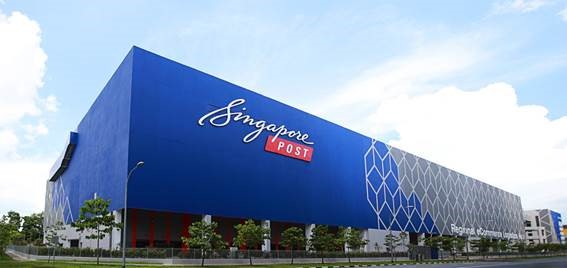
Social Media and Emerging Technologies – Enhancing Customer Experience
Paul Ridden, managing director of UK-based parcel tracking and mobile workforce technology firm Skillweb, discusses the growing consumer power in social media. The advance in mobile computing in recent years has had a considerable impact on the home delivery sector in terms of first time delivery, customer choice and operational performance. Customer experience has become the latest battleground within the sector as operators look to differentiate themselves in the marketplace and compete for the hearts and minds of the often hard to please and demanding consumer.
As a result, many B2C courier and parcel businesses are looking to take mobile computing to the next level, whilst take advantage of emerging communication channels such as social media.
Consumer communication remains a key challenge for carriers faced with how best to meet and manage their expectations whilst keeping costs to a minimum.
First time delivery rates are at their highest ever level and an increasingly wide range of standard and premium delivery options available are providing ever greater choice, but most operators are looking for new ways of building a closer relationship with the consumer to provide added convenience and value.
The Internet has become something of a double-edged sword for the home delivery sector. On one hand it is the source of increasing volumes that continues to grow year-on-year.
In July alone the IMRG Capgemini e-Retail sales index estimated online spend at £6.5 billion – boosted by unpredictable summer weather and the Olympics – equating to an average of £128 per person within the UK.
However, the Internet also provides an effective way for disgruntled customers, whether justified or not, to vent their anger.
The rise of social media such as Facebook and Twitter have only exacerbated the situation, making it easier for the consumer to voice their frustration about poor service or a parcel that hasn’t arrived. We have all seen videos of questionable delivery methods go viral in recent years and this clearly demonstrates the potential damage that can be caused to an organisation’s reputation and brand.
Many operators are now recognising the importance of social media and trying to build a presence online to communicate positive messages and engage with the consumer.
As a result, customer service enquiries are now tweeted to carriers in preference over more traditional routes that are often seen as being slow or unresponsive. However, with people generally more likely to complain about a poor service than praise a successful experience, it has created a slightly unbalanced online view of many of the leading home delivery companies.
Embracing the channels
With this in mind, the home delivery sector needs to be looking at ways of embracing these online and mobile communication channels to enhance the customer experience, protect reputation and even boost revenue.
For this to happen companies need to see social media as an additional channel that is simply an extension to their existing communication processes and take a seamless approach that focuses on providing value to the consumer.
In recent years, mobile computing has supported a host of innovations from parcel tracking and proof of delivery to communicating directly with the consumer via email and SMS.
More recently some carriers have been experimenting with QR (quick response) codes and at least is now using this type of matrix barcode printed on their calling cards to help consumers quickly and simply rearrange deliveries.
The next step is to create an application that can be downloaded to a smartphone or tablet to engage directly with the customer.
This type of app could form the platform for all customer communication across the entire delivery process and enable a carrier to develop an ongoing relationship. In the first instance, it would provide an effective means to provide forthcoming delivery details, further boosting first time delivery rate, whilst providing access real-time customer service via direct messaging or webchat.
Integration
Meanwhile, integration with social media would enable consumers to be encouraged to post or tweet about a successful delivery experience as part of an automated notification process.
This would not only increase the volume of positive messages appearing, but also reduce the level of negativity by providing a closed channel for unhappy customers to receive real-time feedback and support from the customer service team.
This integrated approach could also provide an added opportunity upsell to generate revenue.
By taking advantage of the increasing use of Internet-enabled devices, it would be possible to communicate with the consumer immediately after an online purchase to offer premium services, upgrades and add-ons such as specified time slots or evening deliveries that were not available via the retailer.
Furthermore, carriers would have the ability to promote other services such as consumer-to-consumer, returns and collection point solutions.
The vast majority of consumers are more accepting of a delay or disruption if they receive appropriate warning of a situation. Sitting around not knowing is a sure way of creating animosity, so the challenge for any home delivery operator is catching things before they get too bad.
Emerging technologies such as webchat, mobile applications and social media simply provide a new range of communication tools to boost the consumer experience. However, they will need to be embraced and integrated with existing processes and procedures in order to achieve the desired results.
Paul Ridden is managing director of Skillweb, which provides technology to help organisations manage their mobile workforces and track the movement of goods. The company is responsible for more than 50m transactions each month, with clients including Yodel, Guernsey Post, Jersey Post, Isle of Man Post Office and SingPost.













